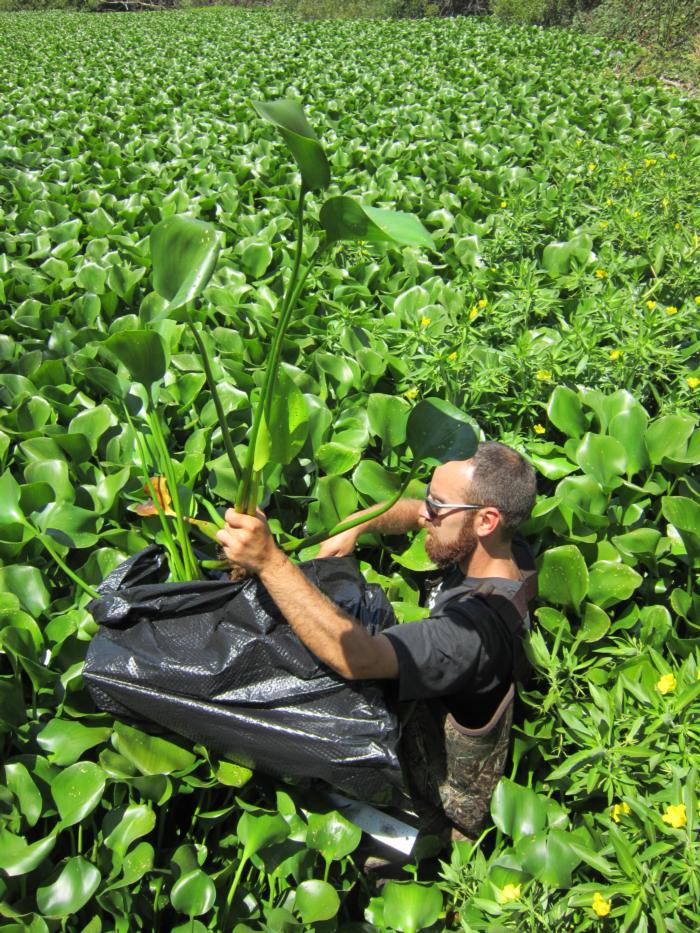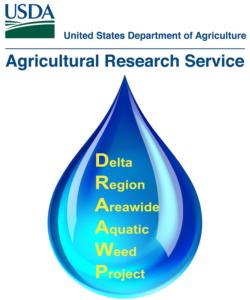Seasonal Growth and Phenology of Invasive Aquatic Weeds
Investigators
Project leader: John Madsen, USDA ARS, jmadsen@ucdavis.edu
Collaborators: Brad Hanson, UC Davis; Guy Kyser, UC Davis.
Objectives
- Study the growth of waterhyacinth, egeria, and curlyleaf pondweed across the seasonal cycles to determine potential weak points in the life history of these three species.
- Collect environmental data, particularly temperature, to develop degree-day models for growth.
Background
Aquatic plant species respond differently to the environmental conditions as they change throughout the seasons. This is particularly true for invasive weeds, such as waterhyacinth, egeria, and curlyleaf pondweed. Waterhyacinth is a tropical plant and, as such, tends to start growing the latest of all of our weeds (Figure 1). Egeria is a subtropical to temperate submersed plant, and maintains green biomass all year long (Figure 2). Curlyleaf pondweed is often described as a cold-temperature or early season specialist, and responds dramatically to shifts in temperature regime (Figure 3).
Understanding the response of these plants in general, and the growing conditions in the Delta in particular, may yield insights into tailoring management for improved control.
Figure 1. Waterhyacinth sampling in the Delta.

Figure 2. Egeria from the Delta.

Figure 3. Curlyleaf pondweed from the Delta.

Approach
For each species, three unique sites have been selected for monitoring. Each month, we collect multiple samples using unit area collection devices, sort the samples to plant components, dry, and weigh them. These samples will be analyzed for the tissue content of nitrogen, phosphorus, and starch. We are also collecting environmental data, such as air and water temperature, available light, and water quality when we sample these species.
Using monthly biomass data, we can analyze plant growth rate versus ambient temperature, and evaluate plant growth against degree-day models. Phenological studies like this have been used to develop management strategies for hydrilla, Eurasian watermilfoil, and other species throughout the country.
Products and Outcomes
Phenological models of growth and life stage for enhanced management of waterhyacinth, egeria, and curlyleaf pondweed.



